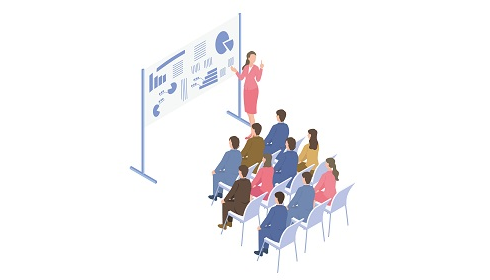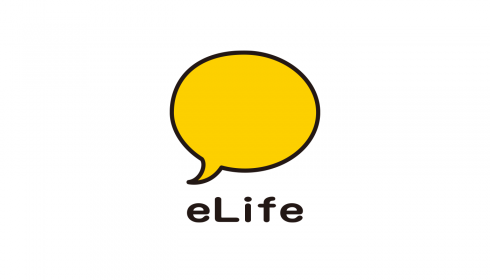5 examples of community revitalization - see by example CSA

In a previous article, we explained one of the core concepts of eLife, " CSA " (coined from eLifeby combining the initials of Creator, Supporter, and Audience). In this article, Asako Tara, a consultant in charge of our company, will introduce some of the ways in which we have helped our corporate community to revitalize itself, so to speak.
eLifeThere are currently about 50 corporate communities, large and small, that we have helped. However, there are many different types of communities.Each client company has its own challenges, and what the community should look like will vary accordingly. However, there are many different types of communities. Communities are usually managed by our consultants and the client company's staff, but in reality, it is a continuous process of trial and error. There is no solution that says, "If you just do this, the community will work.
However, there are a few points to keep in mind.
Company A: About 40 responses per post in Q&A sessions between users! in a serious effort to build a "face-to-face relationship" with the creators and supporters of the company that operates the site, even the president of the company has been converted into content.
First up is a membership community for Company A, a major food processing company that offers a wide range of products, including canned, frozen, and retort pouch foods. The community was launched in 2015 with the aim of increasing awareness of these products and building relationships with loyal fans. Major content includes "Q&A," "recipe content," and "photo reports. In the "Q&A" section, where users answer each other's food-related questions, each post receives approximately 40 responses. The community is also very active, with several hundred submissions each time to the "Community Recipe" recipe development monitor, where users submit recipes using Company A products based on a set theme.
In order to revitalize the community, each and every measure and plan is important, of course, but it is also important toThe key is whether or not the company operating the event can build a "face-to-face relationship" with creators and supporters. but it is also important to take the initiative. Last year, Company A took advantage of the time available in its schedule due to a new type of coronavirus infection, and the president personally "showed up" to help create content. The company solicited questions from users and distributed the direct interview with the president in the form of documentary-style video content, which was met with a great response.
Many companies understand the importance of "showing their face" to their employees, but for a variety of reasons, they are not able to do so. A major factor is that the entire company, from the president down, is seriously involved in the project. The reason why the community at Company A is thriving can be described as follows.
Company B: Free distribution of seedlings of a key product to ensure year-round communication. The company developed a bold, yet cautious, strategy in light of the nature of the community, which was willing to be an active partner.
The membership community for Company B, one of the largest vegetable processors in Japan, was also launched in 2015. Prior research had shown that 30% of Company B's sales came from purchases by the top 2.5% of its customers. These were launched to Increase Loyal Fans and Keep Them Connected in Company B's community. What is unique about Company B's community compared to other corporate communities is that within the community, there is a "community of vegetable seedling growers. The people who grow the seedlings have a lot of fun here. Although this free distribution campaign was initially started with the idea of "hoping that distributing seedlings would make people like our company a little more," the response has exceeded the management's expectations. A subsequent survey showed that members who grew seedlings had a higher NPS (Net Promoter Score) than other members, was more likely to recommend Company B's products to others, and were more willing to cooperate in surveys and other activities.
Thus, each of these measures is not necessarily struck with the certainty of success. It means that it is necessary to try various measures in a kind of experimental way. However, on the other hand, one measure can trigger a negative reaction in the community, so we need to be cautious. However, a campaign that requires integration with an Instagram account, for example, is likely to receive a negative response from older, less tech-savvy members of the community. The goal of the community is to increase the number of people who buy Company B's products because they love them and want to recommend them to others. When considering a campaign, one must always keep in mind whether or not it deviates from the goal and whether or not it is in line with the preferences of current members.
In light of this, significance is also an important role of the consultants in charge of eLife to suggest what not to do. it can be said that the consultant in charge of the project is the one who is in charge of the project.
Company C: The main content, "Q&A," has activated the community with c=70, s=200, and a=2,000 users taking action against each other. In order to protect "purity," the point system was abolished and the number of members decreased, but this is more important than short-term numbers.
The food-related community of Company C, a major food processing company, started in 2016 with the concept of supporting both those who prepare and eat meals every day. When launching a community, it is important to consider what kind of interest groups are involved and the inevitability of what the company is doing. One of the main contents is the "Q&A" section, where users post their concerns about food and answer each other's questions (sometimes the official opinion of the secretariat is given in response). The exchange between members itself is the content, and this is what draws the audience in. In the "gallery contents" section, where supporters can like and comment on the photos of the meals that creators have posted, about 70 creators post a total of about 500 items each month. In response, about 200 people have sent about 6,000 comments, which are viewed by an audience of about 2,000 people.
While these are examples of content that has worked well, there are also content and mechanisms that have been closed. One of the main contents, the "bulletin board," was closed because it was no longer "pure" enough to allow users to post about topics other than the concept of "food" at a time when the anxiety caused by the new coronavirus infection was spreading. In addition, in order to make it easier for third parties to see how each user contributes to the community, in August of this year, the previous leveraging eliminated the point system and moved to a badge system. In August of this year, we also did the same.
With these reforms, there have been some negative reactions, such as people who used to comment for the sake of points suddenly stopping commenting or leaving the site. HoweverCore creators continue to contribute as usual, and there are still supporters who comment out of genuine support for these creators. they have done so. It is too early to draw conclusions, but I believe that these reforms can be seen as a painful process that brought the community closer to what it should have been.
Company D: Community management in the airline industry? Focusing on interest-based rather than attribute-based communication to create a "daily brand experience," the company is creative in providing fun activities other than just miles.
Many of the corporate communities we assist are related to general consumer goods, such as food and cosmetics products, but some are not. The community of major airline company D is a prime example. Many people "fly once or twice a year," so there are not as many opportunities for them to experience the brand as there are for general consumer goods. So the question is, "How do we get people to experience the brand on a daily basis?" This was the issue that Company D was facing when it launched the community. Communities have the advantage over social networking sites in that they are digital and allow for close communication with individual users, while still allowing for ongoing communication between users. The community is a great opportunity for people to experience the brand on a daily basis. However, the impact of each user's actions in a community on other users is much greater than in a social networking service, for better or worse. The people in charge of the companies that operate them are required to be prepared for this.
In this respect, Company D has a complete system with five or six people in charge of looking after the SNS and community exclusively. They check all posts and are heavily involved in everything from replying to comments to event planning and management.
When we launched the Company D community, we started by reaching out to 200 people, mainly those who frequently mention Company D on Instagram or enjoy niche travel. Those who stayed active in the community remained as "ambassadors" and still remain at the core of the community and are responsible for the majority of our posts. In light of the community's goal of "making people experience the brand on a daily basis," it is necessary to recognize users in a way that is different from "miles," which reward those who pay a lot of money to fly. For this reason, D's community offers a variety of different types of badges that users can enjoy collecting based on their efforts within the community.
For example, if a company is aware of an issue such as "there are not many women in their 20s among the current users," the company representative may ask, "How can we attract women in their 20s? For example, if a company is aware of an issue such as "the number of women in their 20s is low among current customers," the company staff will consider measures within the community from the viewpoint of these attributes. However, it is not always the case.In a community, interests are more important than attributes. The community is a place where people with common interests transcend differences in attributes, and this is what generates enthusiasm in the community. The "interest-based" approach eLife has always excelled at interest-based thinking, and it is the job of the consultant in charge of the project to make such detailed adjustments.
Case of Company E: Over 2,500 products have been created based on user requests. The creation of a win-win relationship where ideas that are refined by users stimulating each other are sold as products began with e-mail reply support.
Lastly, I would like to introduce a community-like idea platform from a major specialty retailer, E Corp. This one is different from a community in the pure sense of the word, but it has a community aspect in the sense that it uses user interaction to create products. eLifeThe relationship between Company E and Company E is long and originally began with providing an email reply support mechanism. As an extension of that, Company E's Idea Platform initiative is. Using a system we provide, we solicit requests from users regarding products, and the person in charge receives these requests and makes a decision to send the product for review and improvement. The product is then reviewed by the product department, and if the product is finally commercialized, it is returned to the user on the same page. To date, more than 2,500 products have been created through this system. Since these products were created in response to requests from users, they have naturally received a good response, and the percentage of users who have transitioned from this page to the company's e-commerce site has been extremely high.
The system we provide is also used on the review posting page of the e-commerce site to which we transitioned. The review function itself had been in place for some time, but many of the short reviews were given for mileage purposes and did not function as a factor in making a purchase decision. Therefore, we eliminated the mileage system in conjunction with the introduction of the new system. At the same time, we approached people who were posting enthusiastically on SNS about Company E's products and asked them to post reviews (no incentive), which they graciously accepted, successfully lighting the first fire! The new system is now in place.
Currently, this page gathers reviews that are sufficient in both quality and quantity, but one-third of the comments posted are requests for products, which are also compiled as data and utilized in product development. As Company E's philosophy is to propose "a good feeling life" to people around the world, we would like to reduce the number of 1-star products rather than increase the number of 5-star products. Therefore, it is very important to listen to requests from users using that kind of approach to be a "good idea". You can show your sympathy by clicking the "Like" button on the request postings on the Ideas Platform, and you can also make additional requests by commenting on the postings. That way. When users stimulate each other, requests increase. This gives us a new perspective that we can use to improve our products as an e-company, and as a user, you get the products you want! I think this kind of mechanism that creates a true win-win relationship is a very community-like part of the system.
Consultant for eLife, designing communities from scratch to meet the challenges faced by companies.
eLifeWe have helped numerous companies with a wide variety of issues manage their communities in this way. The solutions are different depending on the challenges they face, so redesigning Communities from Scratch Every Time We will do our best to
One of the reasons we are able to do this is the presence of SOHO workers. With a staff of about 100, they check all the daily postings in each community. They are responsible for meticulous work, such as replying to e-mails based on the results of the analysis. Furthermore, many of the employees who currently stand in front of us as consultants and communicate with clients also started out as SOHO workers and have become full-time employees. Hence.A presence that knows what community management is all about, the characteristics of each community, etc. is the fact that they are not only a part of the company but also a part of the company's team. That is why we believe that we are able to operate a community that is able to scratch the corporate itch.



